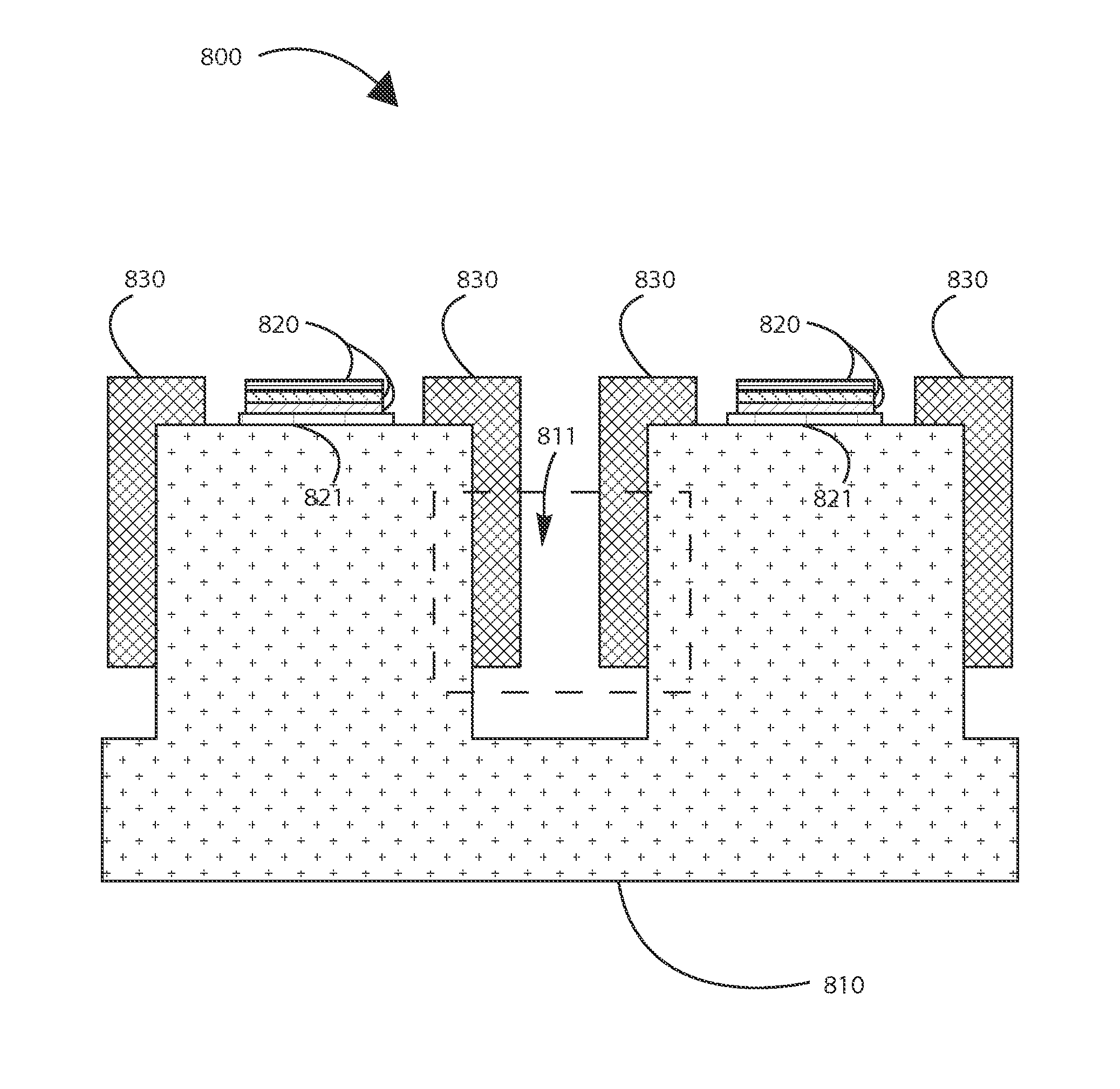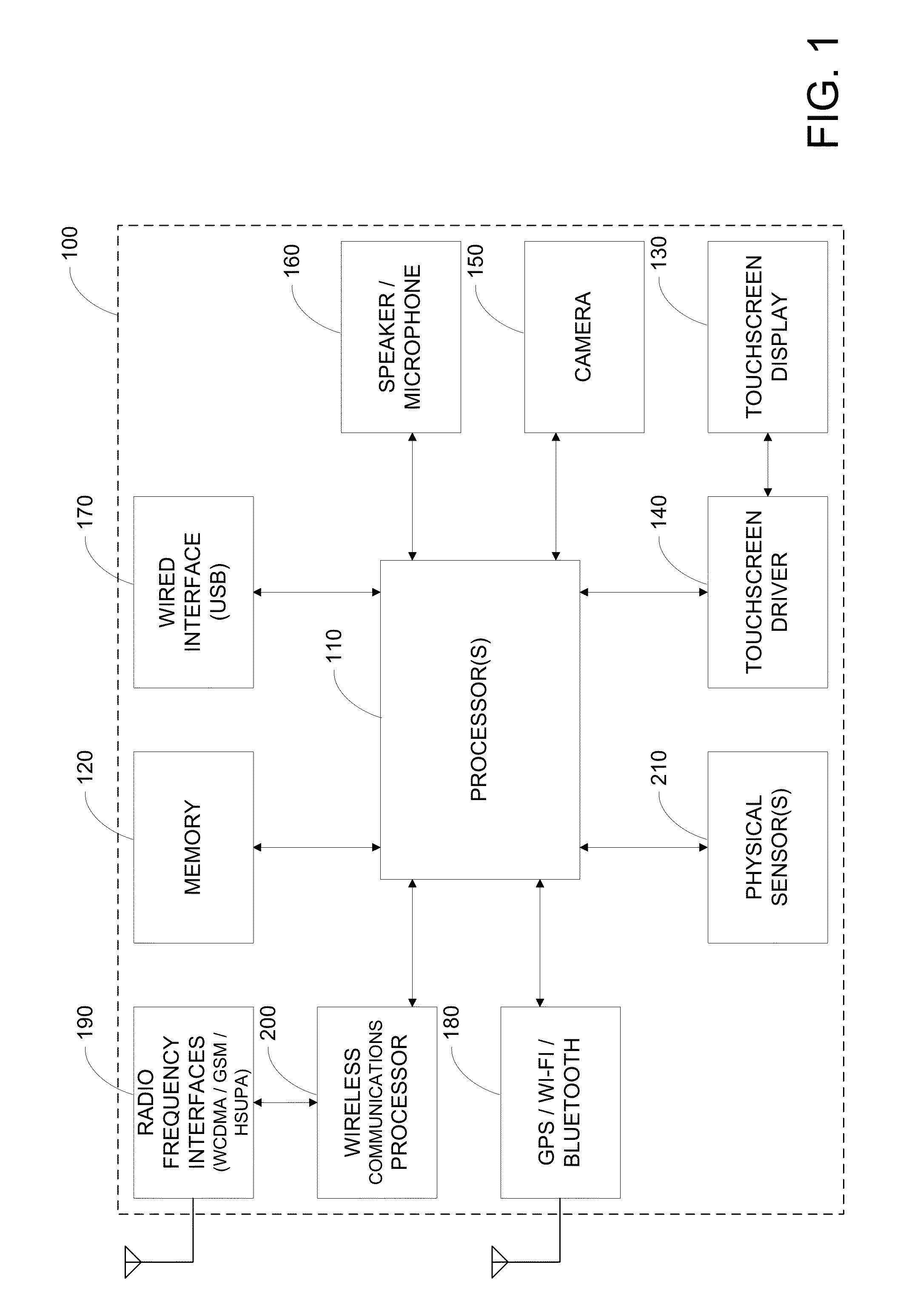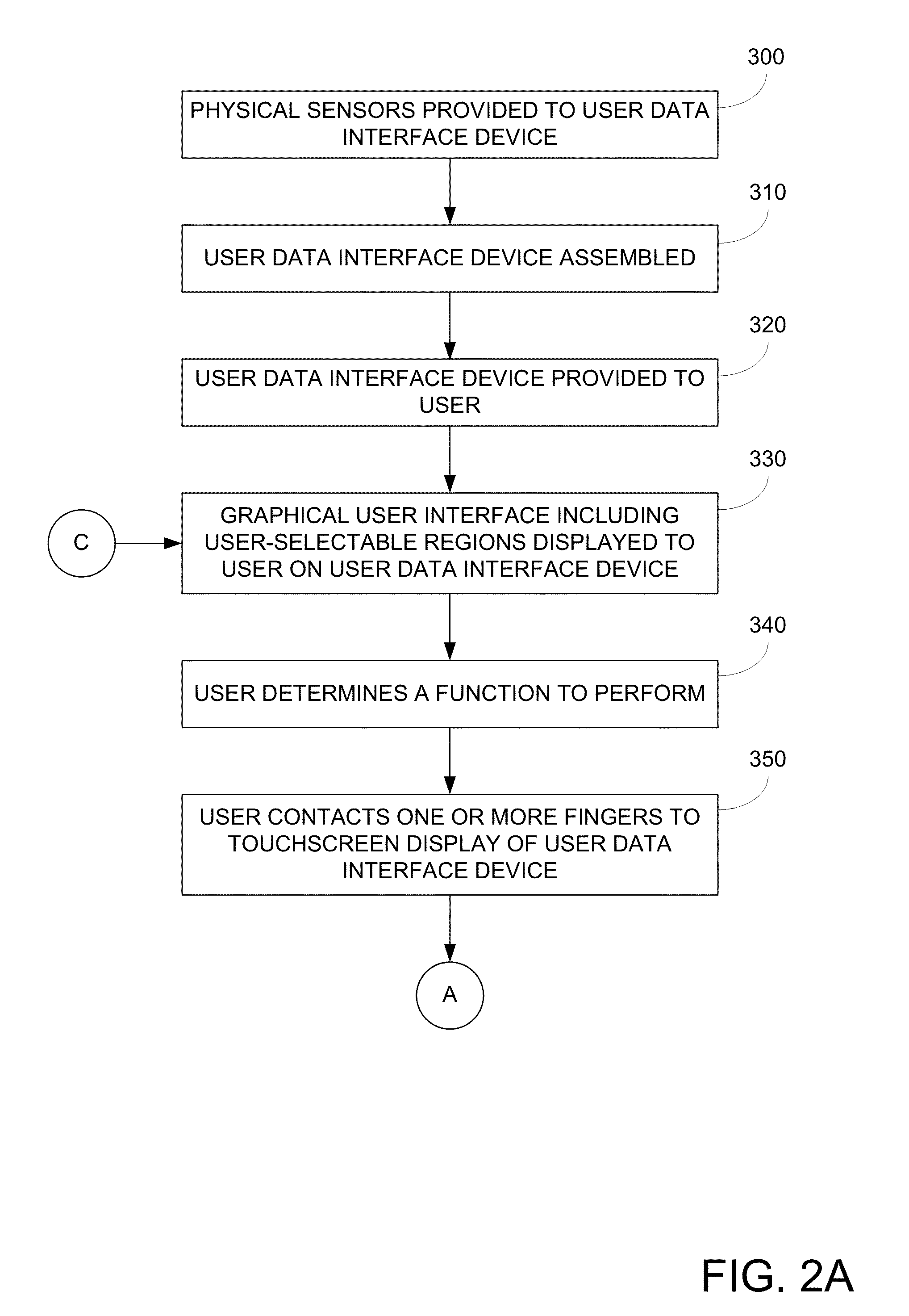Methods and apparatus for object tracking on a hand-held device
a handheld device and object tracking technology, applied in the field of touch screen devices, can solve the problems of frustrating user experience, inaccurate location reporting on the touch screen, and user having to press down with some force on the touch screen
- Summary
- Abstract
- Description
- Claims
- Application Information
AI Technical Summary
Benefits of technology
Problems solved by technology
Method used
Image
Examples
Embodiment Construction
[0034]FIG. 1 illustrates a functional block diagram of various embodiments of the present invention. In FIG. 1, a computing device 100 typically includes an applications processor 110, memory 120, a touch screen display 130 and driver 140, an image acquisition device 150, audio input / output devices 160, and the like. Additional communications from and to computing device are typically provided by via a wired interface 170, a GPS / Wi-Fi / Bluetooth interface 180, RF interfaces 190 and driver 200, and the like. Also included in various embodiments are physical sensors 210.
[0035]In various embodiments, computing device 100 may be a hand-held computing device (e.g. Apple iPad, Apple iTouch, Dell Mini slate, Lenovo Skylight / IdeaPad, Asus EEE series, Microsoft Courier, Notion Ink Genesis, Samsung Galaxy Tab,), a portable telephone (e.g. Apple iPhone, Motorola Droid, Droid X, Google Nexus One, HTC Incredible / EVO 4G, Palm Pre series, Nokia N900), a portable computer (e.g. netbook, laptop), a m...
PUM
 Login to View More
Login to View More Abstract
Description
Claims
Application Information
 Login to View More
Login to View More - R&D
- Intellectual Property
- Life Sciences
- Materials
- Tech Scout
- Unparalleled Data Quality
- Higher Quality Content
- 60% Fewer Hallucinations
Browse by: Latest US Patents, China's latest patents, Technical Efficacy Thesaurus, Application Domain, Technology Topic, Popular Technical Reports.
© 2025 PatSnap. All rights reserved.Legal|Privacy policy|Modern Slavery Act Transparency Statement|Sitemap|About US| Contact US: help@patsnap.com



